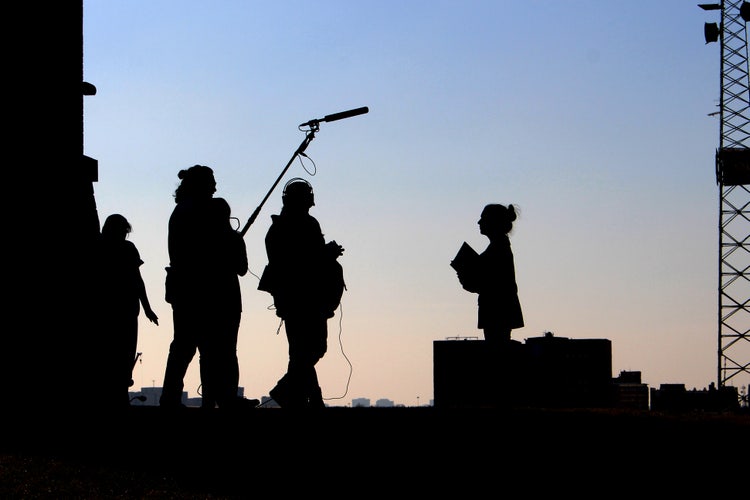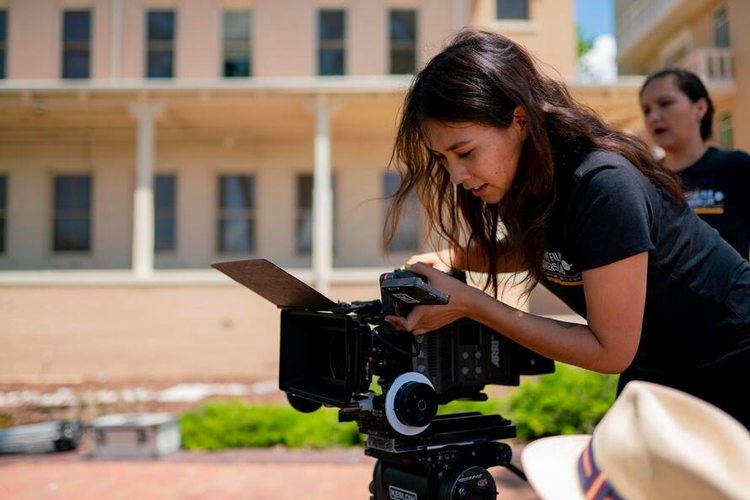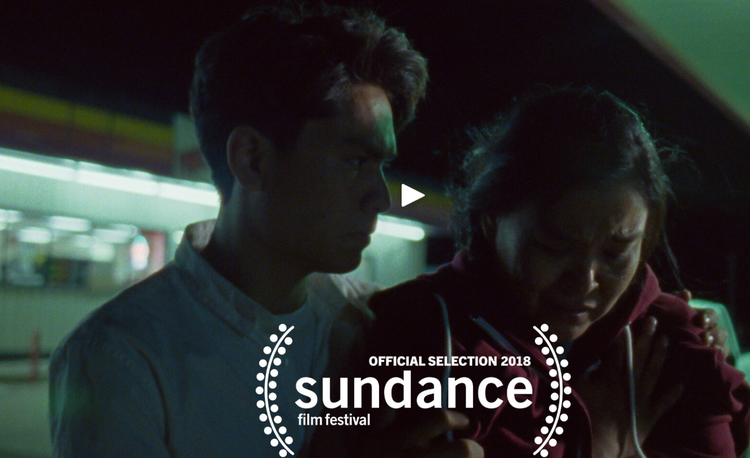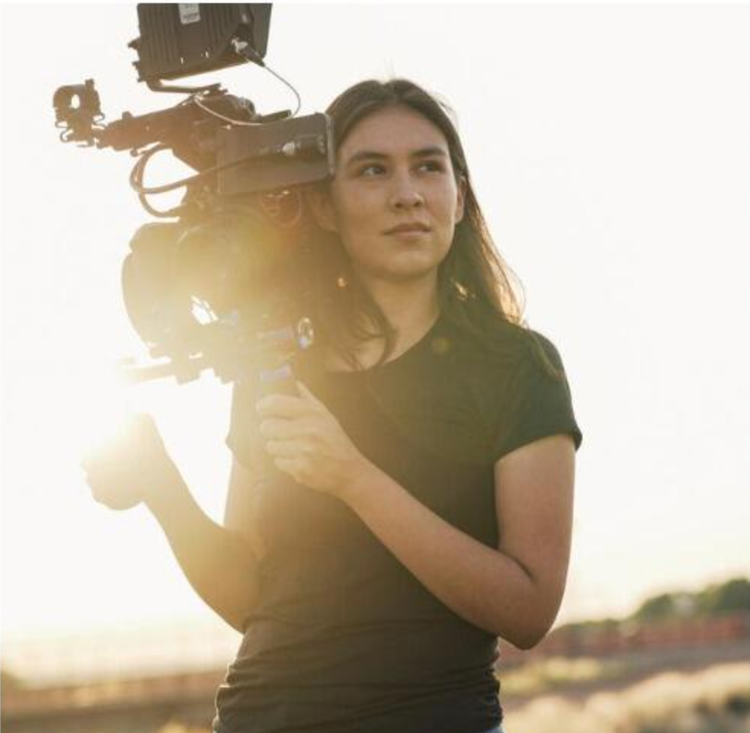How creative fellowships changed my life, with Shaandiin Tome

Image source: Alyssa, Adobe Stock.
Passion is a powerful force, but it takes more to kickstart a creative project. That goes double in creative industries, where even the most talented artists need to climb the long ladder to success, rung by rung. Finding the people, time, and money to start a project under these conditions is a challenge, to say the least.
Enter creative fellowships. Like academic fellowships that allow graduate students to run ambitious research projects in prestigious labs, creative fellowships give young creatives access to grants, networking opportunities, and mentorship from some of the most respected artists in their fields.
As part of Adobe’s commitment to making creativity accessible for all, we offer a number of fellowships to young creatives from all backgrounds who want to explore their talent and learn from people they admire, in a constructive and collaborative environment. Through programs like the Sundance Ignite x Adobe Fellowship and Women at Sundance | Adobe Fellowship, we hope to remove the barriers — both social and industry-driven — that keep young, talented people from pursuing their passions.

Image via ©2019 Sundance Institute | Photo by Austin Madrid.
Which brings us to the big question — how does someone land a creative fellowship? To find out, we spoke with award-winning film director, Shaandiin Tome, about the fellowships that continue to shape her career to this day, and her tips on how to apply.
To call Tome a high achiever is an understatement. She graduated cum laude from the University of New Mexico with a BFA in Film and Digital Media Production. Most recently, at the 2022 SXSW Festival, her documentary short, Long Line of Ladies, was awarded the Short Film Jury Award for Documentary Short. She is an alumna of the 2016 Sundance Full Circle Fellowship, and her short film, MUD (Hashtl’ishni), was screened at the 2018 Sundance Film Festival. In 2019, she was awarded the MAST Fellowship to create a feature film — a program by the Salt Lake City Film Society that grows artists into entrepreneurs to help them create art in every city across the globe.

Image via www.shaandiin.com.
In 2021, Tome was named a Women at Sundance | Adobe Fellow. Below, she reflects on her experiences, explains why fellowships are so valuable for young creators today, what it takes to get noticed.
Let’s start with your first Sundance Fellowship in 2016 – What drew you to the program and how did that first experience inspire you to pursue more fellowship opportunities?
Film school helped me build my technical skills but wasn’t the most creative environment. Despite studying the arts, I rarely saw creativity nurtured in my studies or applied on set. The Sundance Fellowship was a way to move past the academic side of art and collaborate with creative people who are as passionate about film as I am.
The experience struck me on two levels. For one, I felt empowered and encouraged to bring my creative vision to life, which is still a rare thing for a Diné woman in today’s film industry. Just as importantly, I had entered a safe environment. Film industry hierarchies can be intimidating for young practitioners, and many prefer to stay quiet than risk looking foolish. Being able to relax around other fellows and talk shop with experienced practitioners was a revelation. I was hooked.
How have fellowships helped shape your career? As a woman of Diné (Navajo people) heritage, how important was it for you to break through in film and tell your story on the Sundance stage?
To be successful in a creative field, you need talent, but you also need to get noticed. You also need a network of people who can nurture your talent and challenge you when necessary. Step into any meeting of Sundance fellows and you can instantly feel the talent, expertise, and hunger to learn, shared by everyone in the room.
Creatives often forget the business side of their industry because that’s rarely the focus of our education. Fellowships exposed me to leading artists and businesspeople in film, which has been of huge value to my career, particularly as my interest in indigenous storytelling lies outside the norm of Hollywood.
Sundance’s Indigenous fellowship programs were created years ago by Robert Redford but have since grown to include several fellowships for Indigenous artists at different stages of their career. That gives people like me a platform to carve our place in modern film, and the resources to bring our vision to life.
What advice do you have for someone after they win a fellowship? How can they take full advantage of the experience?
Some people treat their fellowship like an award to put on the mantle, but for those of us who want to learn and grow, becoming a fellow is the first step in a bigger journey.
The right fellowship is a golden ticket, giving you access to people, resources, and knowledge with the potential to change your life. Don’t treat your application as the endgame. By becoming a fellow, you can get on the fast-track to achieving your goals, but only if you know why you’re applying, set a course for what you want to achieve, and then draw on your new network to make that happen.
Any tips for young creatives who might feel intimated by the fellowship application process?
When I applied to my first fellowship, I just wanted to be surrounded by like-minded people. The career advantages are great, but the networking and inspiration I get from other filmmakers has always been the most valuable part of the experience.
The application process is rigorous, but that doesn’t mean it has to be joyless. When I review Sundance fellowship applications, the entries that stand out are those don’t follow a prescriptive format. The applicants who drafted them saw the process as a creative project and put their heart and soul into getting their unique vision across.
I also need to stress that getting a “no” may hurt, but it’s never personal. As young creatives, we’re still coming to terms with the rejection that’s inherent to creative industries. “No” doesn’t mean you’re not an artist or that your talent isn’t real. It simply means the moment’s not right, so onto the next one.
With so many creators working alone at home during the pandemic, how do you stay connected to other fellows?
As artists, we often find ourselves on a lonely journey, and that goes double when you’re just getting started. Bonding with fellow creatives can make you feel less alone. For instance, the Indigenous artists I’ve met through Sundance meet regularly to help, mentor, and support each other in both life and work, even if we have to do that virtually these days.
The COVID-19 pandemic hasn’t made things easy, but I still connect with other fellows over video as often as I can. It’s not the same as meeting in person, which I hope to do again soon, but I always leave the discussions reminded that I have an incredible network that will always have my back.
Finally, what would you say to a young creative that’s on the fence about applying for a fellowship?

Image via ©2019 Sundance Institute | Photo by Austin Madrid.
Every person should choose their own path, and I can only speak from my own experience with fellowships, which has been overwhelmingly positive.
There’s so much to be gained from exposing yourself to smart, experienced people who understand where you’re coming from as a young creative. Combine that with rare access to geniuses at the top of your industry and relationships with fellow artists around the world, and the opportunities for growth and learning are endless.
Do you need a fellowship to succeed? Of course not. But the skills, exposure, and knowledge I’ve gained by collaborating with people I admire has been a major boost to my confidence and my career as a filmmaker.
Check out the links below for more resources on getting started with your film: